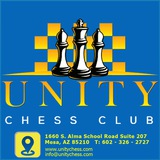Other moves also lose:
A) 21...exf3 22.gxf7+ Qxf7 23.hxg7!;
B) 21...fxg6 22.Nh4! g5 23.h7+ Kf7 24.Nf5 Qe6 25.Rxg5 g6 26.Rh6+–;
C) 21...f5 22.Qxc4+ Qe6 23.Qxe6+ Rxe6 24.Ng5 Rf6 25.Nf7 gxh6 26.Rxh6+–.
A) 21...exf3 22.gxf7+ Qxf7 23.hxg7!;
B) 21...fxg6 22.Nh4! g5 23.h7+ Kf7 24.Nf5 Qe6 25.Rxg5 g6 26.Rh6+–;
C) 21...f5 22.Qxc4+ Qe6 23.Qxe6+ Rxe6 24.Ng5 Rf6 25.Nf7 gxh6 26.Rxh6+–.
White had to cover the d4-square: 18.Nb1! Nd4 19.Bxd4 cxd4 20.Qd3 a6 21.a4 Qe5 22.Nd2 b5 23.g3∞.
White had evidently overlooked that after 19.Nxb5 fxg2! 20.Rxf8+ Rxf8, he cannot save the knight on b5: 21.Nc3? Bh3–+.
The black knight has transferred from c7 to d4, creating strong threats on the kingside.
A technical decision in Botvinnik’s style. Black goes into an endgame with an extra pawn.
A tactician would have decided the game in the following fashion: 23...Qh5!? 24.f4 Rf6 25.f5 Bxf5 26.exf5 Nxf5, with a winning attack.
A tactician would have decided the game in the following fashion: 23...Qh5!? 24.f4 Rf6 25.f5 Bxf5 26.exf5 Nxf5, with a winning attack.
Black has an extra pawn and great winning chances, although subsequently, he failed to cope with the technical problems, and the game ended in a draw.
